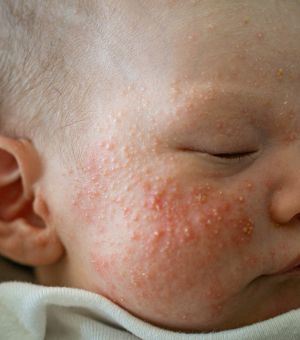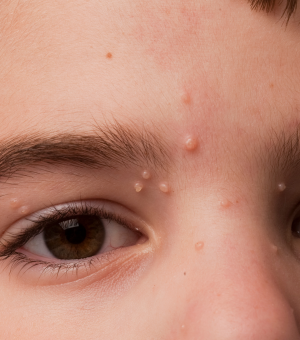Monday, March 17, 2025
Everything you need to know about Baby acne: Causes, treatment, and prevention
Dre Emilie Bourgeault
Your newborn’s skin is soft, delicate, and often unpredictable. One day, it looks smooth and flawless, and the next, small red spots appear! If you’ve noticed tiny pimples on your baby’s face, you’re not alone—baby acne is a common condition that affects many infants in their first few weeks of life. While it can be concerning to see blemishes on your child’s skin, rest assured that baby acne is harmless and temporary. Let’s explore the causes of this condition and how to care for your baby’s sensitive skin.



